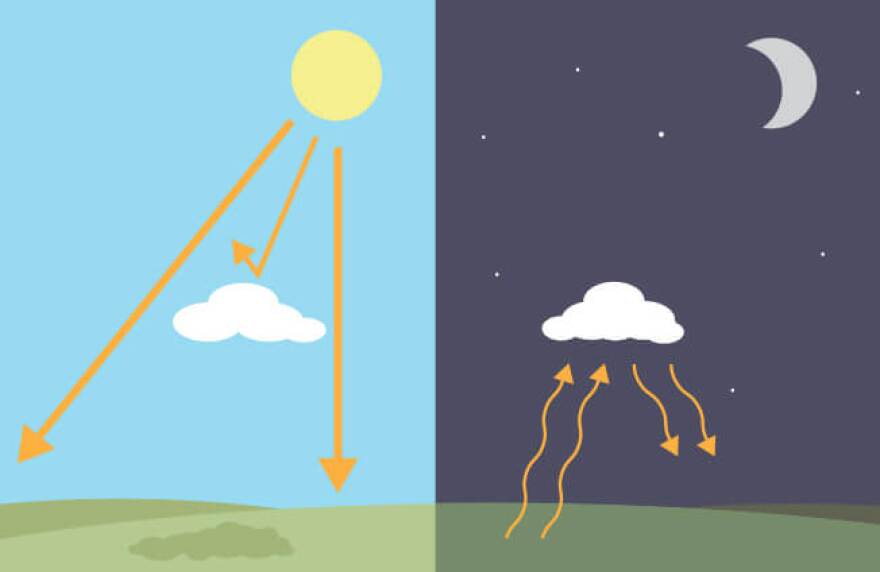Precipitation comes in all forms: rain, sleet, freezing rain, and snow. Some even count virga, which becomes a gas and evaporates before it reaches us as raindrops. Hail also exists but forms differently than the other precipitation mentioned above.
Think of the atmosphere as a cake. We are all inside a cake. This cake has different layers; each must have a certain temperature to produce a specific precipitation type. However, it is essential that as you go through the various layers, the type of precipitation will change form. Let´s do a deep dive into this cake! But first, we have to talk about where the precipitation is ´born´… clouds!

Clouds significantly impact the Earth’s temperatures, especially those closer to the surface. During the day, lower clouds, within a mile or so from the surface, usually tend to cool the earth´s atmosphere. These low, thicker clouds primarily reflect the Sun's heat, cooling the Earth’s surface. High clouds have the opposite effect; they tend to warm Earth more than cool it. There is an interesting effect at night: clouds tend to keep the Earth’s surface warmer by keeping the heat trapped. So, they act like a blanket.
How does precipitation form?
The clouds are icy. The taller the clouds, the colder the temperatures. Clouds can be as cold as minus 50F. It is safe to say that all precipitation starts as crystals up there! Once the clouds get heavy, they can’t hold up all that weight and fall. As these crystals fall through the atmosphere, the temperatures determine the type of precipitation they become and the surface’s temperatures.

Types of precipitation and how they form?
Rain is liquid precipitation that forms and lands on the Earth's surface in this form. For this type of precipitation to happen, the temperatures of the layers it travels through must be above freezing. That is above 32F.

Freezing rain is rain that freezes when it touches a surface with a subfreezing temperature and freezes on touch. This happens more often on plants, bridges, roads, etc.
You can think of sleet as a mixture of rain and snow. Precipitation starts as snow and passes through a thin layer of above-freezing temperatures, becoming rain, followed by another layer of freezing temperatures, keeping some precipitation frozen and some liquid.

Snow falls on the surface as the precipitation stays solid and travels through subfreezing temperatures from clouds to the ground.
Another type of precipitation that is worth highlighting is hail. Although it forms inside clouds, it starts from a strong updraft into the troposphere. The ascending air keeps the crystals growing. The precipitation drops once the updraft winds down or the hail becomes too heavy for the ascending air. The interesting thing about hail is that it remains ice even as it falls through above-freezing temperatures. These hailstones drop so fast that they do not have time to thaw all the accumulated layers acquired while bouncing inside the thunderstorm clouds.

